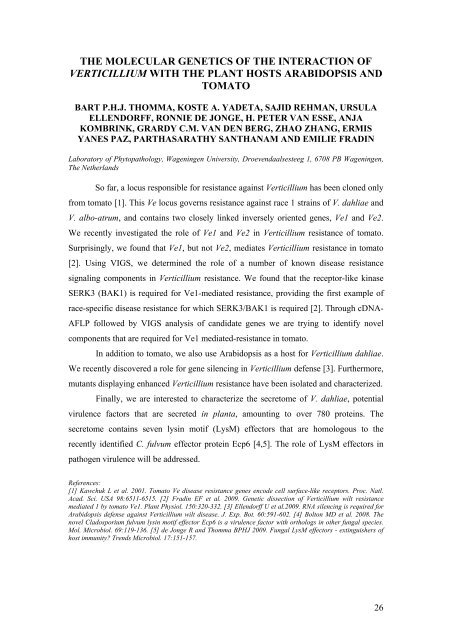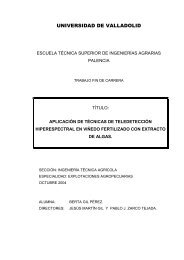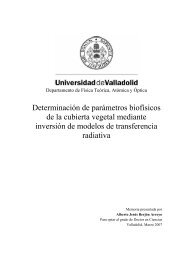10th INTERNATIONAL VERTICILLIUM SYMPOSIUM 16-20 ...
10th INTERNATIONAL VERTICILLIUM SYMPOSIUM 16-20 ...
10th INTERNATIONAL VERTICILLIUM SYMPOSIUM 16-20 ...
You also want an ePaper? Increase the reach of your titles
YUMPU automatically turns print PDFs into web optimized ePapers that Google loves.
THE MOLECULAR GENETICS OF THE INTERACTION OF<strong>VERTICILLIUM</strong> WITH THE PLANT HOSTS ARABIDOPSIS ANDTOMATOBART P.H.J. THOMMA, KOSTE A. YADETA, SAJID REHMAN, URSULAELLENDORFF, RONNIE DE JONGE, H. PETER VAN ESSE, ANJAKOMBRINK, GRARDY C.M. VAN DEN BERG, ZHAO ZHANG, ERMISYANES PAZ, PARTHASARATHY SANTHANAM AND EMILIE FRADINLaboratory of Phytopathology, Wageningen University, Droevendaalsesteeg 1, 6708 PB Wageningen,The NetherlandsSo far, a locus responsible for resistance against Verticillium has been cloned onlyfrom tomato [1]. This Ve locus governs resistance against race 1 strains of V. dahliae andV. albo-atrum, and contains two closely linked inversely oriented genes, Ve1 and Ve2.We recently investigated the role of Ve1 and Ve2 in Verticillium resistance of tomato.Surprisingly, we found that Ve1, but not Ve2, mediates Verticillium resistance in tomato[2]. Using VIGS, we determined the role of a number of known disease resistancesignaling components in Verticillium resistance. We found that the receptor-like kinaseSERK3 (BAK1) is required for Ve1-mediated resistance, providing the first example ofrace-specific disease resistance for which SERK3/BAK1 is required [2]. Through cDNA-AFLP followed by VIGS analysis of candidate genes we are trying to identify novelcomponents that are required for Ve1 mediated-resistance in tomato.In addition to tomato, we also use Arabidopsis as a host for Verticillium dahliae.We recently discovered a role for gene silencing in Verticillium defense [3]. Furthermore,mutants displaying enhanced Verticillium resistance have been isolated and characterized.Finally, we are interested to characterize the secretome of V. dahliae, potentialvirulence factors that are secreted in planta, amounting to over 780 proteins. Thesecretome contains seven lysin motif (LysM) effectors that are homologous to therecently identified C. fulvum effector protein Ecp6 [4,5]. The role of LysM effectors inpathogen virulence will be addressed.References:[1] Kawchuk L et al. <strong>20</strong>01. Tomato Ve disease resistance genes encode cell surface-like receptors. Proc. Natl.Acad. Sci. USA 98:6511-6515. [2] Fradin EF et al. <strong>20</strong>09. Genetic dissection of Verticillium wilt resistancemediated 1 by tomato Ve1. Plant Physiol. 150:3<strong>20</strong>-332. [3] Ellendorff U et al.<strong>20</strong>09. RNA silencing is required forArabidopsis defense against Verticillium wilt disease. J. Exp. Bot. 60:591-602. [4] Bolton MD et al. <strong>20</strong>08. Thenovel Cladosporium fulvum lysin motif effector Ecp6 is a virulence factor with orthologs in other fungal species.Mol. Microbiol. 69:119-136. [5] de Jonge R and Thomma BPHJ <strong>20</strong>09. Fungal LysM effectors - extinguishers ofhost immunity? Trends Microbiol. 17:151-157.26




